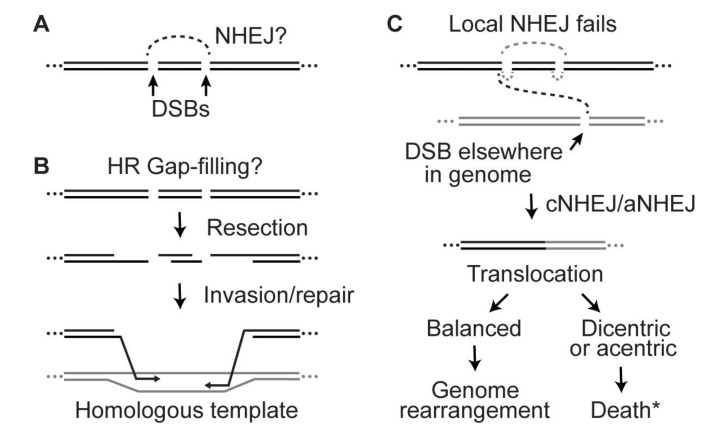Figure 4.
Key questions about clustered DSB repair, illustrated with 2-DSB clusters. (A) Short DNA fragments inhibit cNHEJ but it is unclear why distal broken ends, which are termini of long DNA fragments, are not efficiently rejoined (dashed line) by NHEJ. (B) Why do the distal ends of a DSB cluster not invade homologous sequences and repair the gap via HR? (C) If local NHEJ is delayed or fails at clustered DSBs (grey dashed lines), this may provide time for broken ends to migrate and rejoin with a broken end elsewhere in the genome by cNHEJ or aNHEJ, producing translocations. Balanced translocations are probably survivable events despite the large-scale genome rearrangement. However, unbalanced translocations create dicentric and/or acentric chromosomes that are frequently lethal. “Death*” indicates death plus other possible outcomes, such as stimulation of bridge-breakage-fusion cycles and persistent genome instability [134,135].

